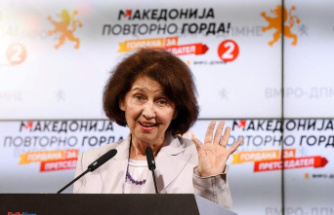The climbing of the prices of light that has multiplied the levels of a year ago and in the last three days it accumulates three historical records is a situation that is taking place throughout Europe, although Spanish households suffer it with greater intensity than the Average of the countries of the European Union, according to the Bank of Spain.
The body today published an analysis in which it studies the factors that are driving up the price of electricity since last January and its conclusion is that, although the behavior of the prices in the wholesale markets of the main countries From the euro area it has been similar to Spanish, "The translation of these developments at retail prices would have been heterogeneous by countries." And Spain is missing.
"The CO2 market can not be a guillotine for the consumer," said Teresa Ribera, Minister of Energy Transition, last July at Congress when dealing with the crisis of the electricity market. Ribera requested the review of the CO2 emission rights market as well as the marginalist system in the fixation of wholesale market prices.
The fact is that, although these two factors are the main drivers of climbing throughout Europe, there are marked differences between the final impact they are having on households in different countries.
Thus, according to the Bank of Spain, speculation with the rights of CO2 emissions on which the Government has discharged most of the responsibility of climbing, it would occupy a fifth of the increase in the light experienced between December 2020 and June 2021, period analyzing the study and in which prices have doubled. Half of the increase would correspond to the rise in the gas-generating market used to produce electricity. The rest, that is, about a third party would be explained by the systems with which each country transfers to final consumers the prices of the wholesale market.
Supervisor's technicians indicate that these differences in the final impact on consumers consist of the regulation of each country and their price setting system. And they emphasize that in the Spanish case this impact has been "particularly elevated". As a sample of the difference that means to pay for light in different countries of the Monetary Union, the Bank of Spain indicates that in the basket of consumption of Spanish households, the bill of light weighs 3.5% compared to 2.9 % of average in the euro area or, already setting in particular cases, compared to 3% from Germany, 3.2% in France or 2.3% in Italy.
In fact, the greatest Spanish vulnerability against speculation that the electric wholesale market has a macroeconomic translation in terms of inflation. "The estimates made indicate that the increase in the price of electricity in the wholesale markets would be responsible for a third of the rebound of the harmonized consumer price index (IAPC) observed in our country in the first half of 2021," says the bank from Spain. The IAPC harmonizes a way to measure the evolution of prices in EU countries. That is why it is the instrument of comparison that the body uses to affirm that the impact of the electrical price crisis "would have been remarkably lower both in the area of the euro area and in its three main economies."
Date Of Update: 10 August 2021, 09:53











